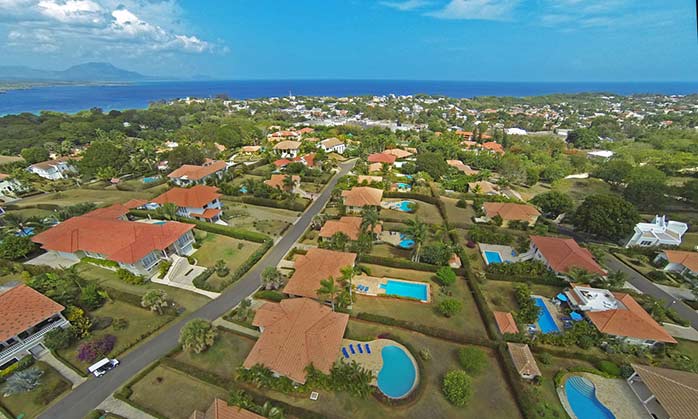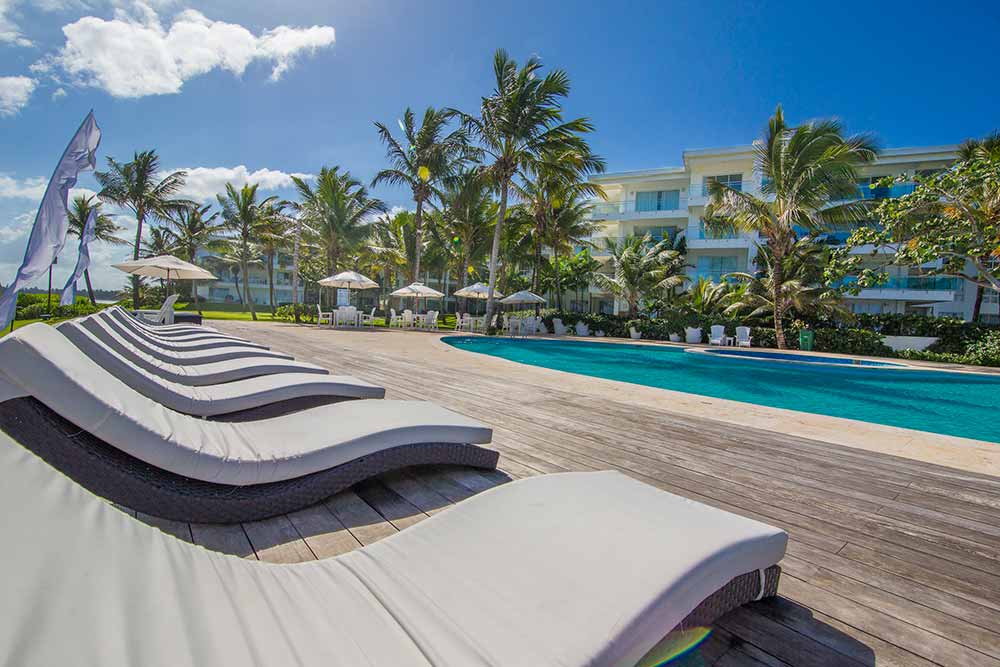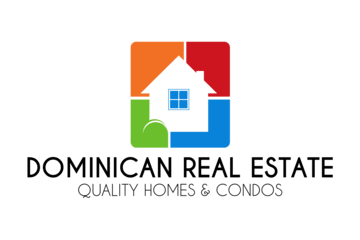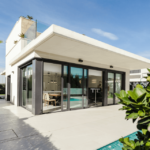The Only Comprehensive Guide Available Online—Updated for 2020
WHO IS THIS GUIDE FOR?
So…you’ve found your dream home in the Dominican Republic!
Maybe you’ve got your eye on a great condo by the beach near Sosua. Or a hillside villa overlooking Puerto Plata. Or maybe you discovered a place near one of the fab surfing spots close to Cabarete.
Whatever your dream, you’re now ready to take the first steps to make it your own…
Below, we outline the entire process, step by step.
Table of Contents
CHAPTER 1
WHAT YOU NEED TO KNOW FIRST
The first step is making an offer on the home you’d like to buy.
Go to chapter
CHAPTER 2
MAKE OFFER (OR RESERVE LOT)
The first step is making an offer on the home you’d like to buy.
Go to chapter
CHAPTER 3
TRANSFER DEPOSIT
Arrange for the deposit. Usually $5K-$15K, to be held in trust.
Go to Chapter
CHAPTER 4
SIGN PROMISE OF SALE
Outline your offer, as well as all terms and conditions.
Go to chapter
CHAPTER 5
TITLE SEARCH
Determine if property is free of liens and other claims.
Go to Chapter
CHAPTER 6
MAKE PAYMENTS
Transfer final payment (or first instalment for pre-construction)
Go to Chapter
CHAPTER 9
FINAL INSPECTION
Walk through to see what details still need to be addressed.
Go to Chapter
CHAPTER 10
SIGN THE FINAL AGREEMENT
You’re now the proud owner of your new home in the DR!
Go to Chapter
CHAPTER 11
CHOOSE AN AGENT & LAWYER
Make sure you have the right professionals to help you.
Go to Chapter
CHAPTER 1
What You Need to Know First
Okay, so you’re looking for—or at least, you’re seriously thinking about—buying a home somewhere warm.
Good news item #1:
In the Dominican Republic, there aren’t the same restrictions on land that you’ll find elsewhere in the Caribbean and Central America.
Foreigners are allowed to purchase land in the Dominican Republic with the all same rights as citizens. In fact, it’s spelled out in the country’s constitution!
Good news item #2:
The real estate market is structured like it is in North American. This is a good thing, because it gives you as an owner full legal protection.
This isn’t the case in a lot of other places in the Caribbean (and in Mexico). One of the great things about the DR is that it has a fully regulated system of land titles.
What does this mean?
Every property has a title that spells out who specifically own it. When you buy a property, your name goes on that title. In other words, you have full legal ownership of both the house and the land, or for a condo, full ownership of the unit.
Good news item #3:
The process to purchase property in the DR is a lot like it is in the United States and Canada.
With an experienced agent and the right lawyer, you’ll have no trouble finding and buying your Caribbean dream home.

New Builds vs. Pre-Construction
When buying a home, you’ll be looking at one of two scenarios:
Either a) you’re buying an existing home, b) or you’ll be building a new home.
Existing Home:
By an existing home, we’re talking one of two things: a new home still owned by the developer and not yet sold to anyone.
Or an existing home could be a resale, so previously owned by another individual and is now on the market.
Pre-Construction:
The other scenario is that instead buying an existing home, you’re going to build a new home.
You’ve got your eye on a piece of land and will pay a developer to build a new home, sometimes based on an existing design and other times totally custom designed.
Either way, this is called pre-construction. For pre-construction, the process has a few differences.
Usually the timelines between each will differ significantly.
Timeline:
For an existing home, a deal can be finalized within weeks or even days.
When you build your own home, obviously construction takes time, so the time from when you reserve a lot until you move into your new home will take at least several months.
CHAPTER 2
Step 1: Make an Offer (or Reserve a Lot)
f you’d like to purchase a home that’s already built, you and your agent will prepare an offer.
Your offer outlines the important details about the purchase:
- the price and what’s included in that price
- what payments you’re going to make
- when you’ll make those payments and how
- details about taking possession
- other important information.

Americans, Canadians and other foreigners can buy ocean view property like this on the North Coast of the Dominican Republic
Pre-Construction
On the other hand, when you’re constructing a new home the process starts a little differently.
You need to first choose a lot to build on, which requires a Reservation of Sale.
The Reservation of Sale, along with your deposit, reserves the lot you’ve chosen.
No surprise there.
In a nutshell, it clearly describes the lot, including dimensions and location—and of course, the price and any conditions.
CHAPTER 3
Step 2: Transfer Your Deposit
When purchasing an existing home, you’re not going to pay the deposit to the seller just yet. The seller won’t actually receive the funds until after you’ve signed the Promise of Sale (more on this later).
For now, you’ll transfer the deposit to a third party, for example your agent or lawyer, who will hold the funds in a trust account.
A deposit is usually between $5,000 and $15,000 US. Transferring the deposit signals your commitment to your offer.
But remember: At this point you won’t yet have paid the deposit to the seller.
If for any reason either you or the seller decides not to move ahead with the deal and sign the Promise of Sale, you’ll get your deposit back.
However, once you’ve signed the Promise of Sale, the seller receives your deposit and there’s no refund.

Pre-Construction
For pre-construction, the deposit serves a different purpose: it reserves your lot and it’s usually non-refundable.
Typically, if you’re reserving a lot for a new home, the amount of the deposit will be towards the higher end (so in the $15K range).
This is because it covers initial design and construction costs (like reserving materials).
So once you’ve reserved your lot, you’ll need to choose a model and design and settle other construction details. To get this done, you’ll work with the developer’s architect and designer.
This is the fun part!
You decide which add-ons to include, for example an extra room, larger bathroom, rooftop terrace, etc.
Depending upon the developer, you’ll have more or less leeway for these types of customizations.
CHAPTER 4
Step 3: Sign the Promise of Sale
If the seller accepts your offer, the next step is for you to sign what’s called a Promise of Sale. This document is going to outline most of the information in your initial offer, as well as a few other terms and conditions.
For pre-construction, your Promise of Sale will also include the developer’s quote. it outlines what they’re going to build and for how much.
In other words, the scope of work and the price.
Upon signing the Promise of Sale, your deposit will be released from trust and sent to the seller.

What’s Included in the Promise of Sale?
THE PARTIES INVOLVED
The first section names the buyer, and the seller and describes the property, including size, rooms and location. The rest of the document then lays out various terms and conditions.
PRICE DETAILS
The first set of conditions states the total price to be paid and details about payment, including number of instalments, timing of instalments and how payments will be made (say, for example, via an escrow account.
DEPOSIT DETAILS
Outlines the release of the deposit to the seller, with any conditions. Once you sign this document on the dotted line, you’re agreeing to release your deposit from wherever it’s being held.
TAXES & ADJUSTMENTS
States that the seller is responsible for any outstanding taxes on the property. If you’re exempt from any expenses or taxes related to the sale this will be clearly outlined here too.
PROPERTY TITLE
Title to the property: This will state that the seller is responsible for providing the title to you, free of liens and other claims.
POSSESSION
Details the date you can take possession of the property, and conditions that must first be met, typically a dollar amount that must be paid.
CHAPTER 5
Step 4: Title Search
Your lawyer will now conduct a title search.
The title is a legal description of the property and buildings on it, as well as the location of the property. Most importantly, it states who has legal ownership of the property.
To search, your lawyer will look at the title to see if there are any liens or lawsuits associated with it. You don’t want to be on the hook for these, so if anything is found, the seller will need to remove these—or the deal is off.
For pre-construction, a title search shouldn’t be necessary. The developer should have clear title on all properties.
If everything looks good on the title, you’ll then release any conditions in the contract.
You’re ready to buy your new home!

CHAPTER 6
Step 5: Payments
Now, it’s time to pay for your purchase.
Like you did for the deposit, you’ll transfer all funds through a 3rd party, possibly via a trust account that your lawyer set up for you.
Any money to be paid will go in the trust and then released when give the order.
You’ll transfer funds for the remaining balance owing at this time. Usually, this means paying all of the outstanding balance, so the agreed price minus your deposit.
In some cases, your agreement will only require a portion of the total price, say 50%, at this time. You’ll be able to take possession at this point, but only have to pay the remaining 50% after a certain date, say in 3-4 months.
If you’re financing part of the purchase, you’ll pay whatever’s required to cover the down payment.

Pre-Construction
For pre-construction, this is when you’ll transfer your first instalment payment, which gets construction going.
This first payment is usually around 30-40% of the sale price, minus whatever amount you paid for the deposit.
During the construction of your new home, you’ll continue to transfer instalments as key milestones are reached.
CHAPTER 7
Step 6: Final Inspection
Before officially taking possession of your new home, you’ll need to do a final walkthrough with your agent and the builder, developer or current owner to make sure everything looks good.
This is especially important for pre-construction.
You’ll likely have visited one or more times during construction to monitor progress and inspect the build as key milestones are reached.
But the final inspection is your last chance to make sure everything has been built to your specifications.
For the final inspection, you’ll fly down and stay within the development or at a place nearby. Some developments will cover the cost of your stay, others won’t.

With your own vacation home, you too can enjoy the North Coast lifestyle.
CHAPTER 8
Step 7: Sign Final Agreement
It’s now time to sign the final agreement, which is called the Agreement of Final Sale.
If you’re financing through the seller, the final agreement will include a mortgage addendum outlining the rate, term and payment schedule.
At this point, the title will be transferred, meaning the developer’s name or previous owner’s name is removed and yours is added to the title.
You’re now the sole owner of the property.
Your new home is now yours!

CHAPTER 9
Bonus: How to Choose an Agent or Lawyer
First, find an agent who can represent your interests.
- Your agent should REALLY know the real estate market on the North Coast.
- Not just what’s for sale and how prices compare. That’s pretty standard.
- Your agent should also know the specifics and the pros and cons of each development.
- And a good agent will understand construction, how homes are built in the DR, and be able to spot quality building.
A good agent will want to find you the home that’s best for you.
And of course, once you’ve found a good agent, make sure you follow his or her advice!
As well, you’ll need a lawyer who’s familiar with real estate law in the Dominican Republic. Because the DR has a rules-based real estate market, a lawyer is critical.
The lawyer will prepare documents and make sure the process follows the proper legal path. All the paperwork will be prepared in Spanish and can be translated into English for you.
Who is Dreaming DR Dominican Republic?


Steve Van Ryswyk
DOMINICAN PROPERTY EXPERT
Steve managed one of the biggest residential communities on the North Coast. He’s got an expert eye for assessing the quality of developments. He reviews and vets each home before we add to our select list of properties.


Christine MacLean
REAL ESTATE AGENT
Christine made the move to the DR over five years ago. She leads our team of on-the-ground real estate experts, always in search of the best properties and investment opportunities on the DR’s North Coast.


John Macaulay
OUTREACH & EDUCATION
John’s connections to the DR go back over a decade. His job is to help you understand how to make your move to the DR. He’ll be your main source for information about buying property and the DR lifestyle.
Dreaming DR has vetted and recruited a group of local professionals to help you move to and live in the DR:
lawyer | insurance broker | bank manager | car mechanic | handyman | residency expert




